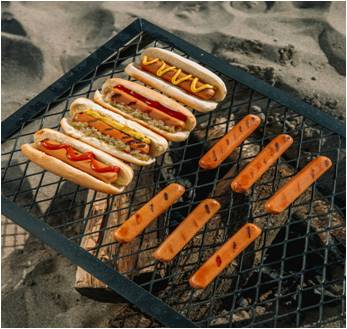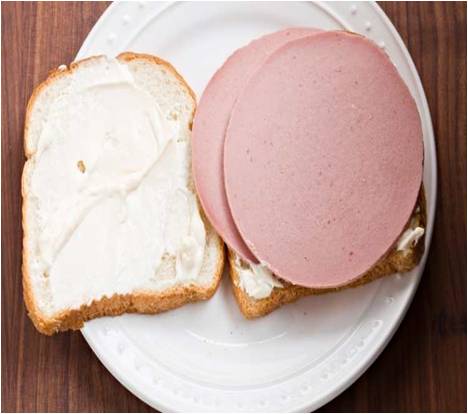Does Eating Beef Really Cause Cancer? What Scientists Say
By Chinonso Cynthia Ukah, BNSc, RN, RM, RPHN. Freelance Health Writer. Medically reviewed by: A.Odutola MBBS, PhD, FRCSEd
.jpg)
Beef cut
Beef is the name given to the meat of a cow and is classified as red meat unlike poultry or fish, which are white meats. It is a rich source of protein, iron, and essential nutrients, enjoyed by many people around the world.
Scientific studies have suggested that regular consumption of beef, especially processed beef may be linked to an increased risk of certain types of cancer, with colorectal cancer being the most identified.
If you’re serious about taking care of your health, this post is for you. It will explain how beef may contribute to cancer and what major health organizations recommend to stay safe.
The Red Meat Cancer Link Study
Research from organizations like the World Health Organization (WHO) and the American Institute for Cancer Research (AICR) has led to unprocessed red meat being classified as "probably carcinogenic" to humans.
Processed meats, including beef products like sausages and hot dogs, fall under the class 1 carcinogenic category. This is due to added preservatives and high-temperature cooking methods which strongly link them to cancers of the colon and rectum.
Unprocessed red meat, including beef, pork, and lamb, falls under the category of class 2A carcinogens. This classification is based on limited evidence from human studies but is supported by stronger evidence from animal research and mechanistic data. This means that compounds such as haem iron found in red meat could cause colorectal cancer.
The potential risk of developing cancer linked to beef consumption is not solely due to the beef itself but also to the changes that occur during cooking, processing, and digestion.
Beef contains haem iron which gives red meat its color. It is found in the myoglobin of cow muscle tissue. During digestion, haem breaks down and forms harmful compounds like N-nitroso compounds (NOCs) and aldehydes in the gut. Research links these compounds to an increased risk of colorectal cancer especially when your consumption of red meat exceeds 18 ounces per week.
Grilling, frying, barbecuing, or roasting beef at high temperatures produces harmful chemicals called heterocyclic amines (HCAs) and polycyclic aromatic hydrocarbons (PAHs). These compounds are produced when beef is cooked at high temperature and in direct contact with the fire. Eating this form of meat can damage deoxyribonucleic acid (DNA), leading to mutations that may promote cancer development.
Processed beef products like bacon and sausages often contain preservatives such as nitrates and nitrites to extend shelf life. In the body, these compounds can convert into carcinogens like N-nitrosamines, which are linked to cancers of the digestive tract.
Not all beef carries the same level of risk. Unprocessed cuts tend to be healthier choices than processed options.
These contain preservatives, are salted, cured, smoked and are more strongly linked to cancer risk. They are classified as class 1 cancer-causing agents by the World Health Organization.

Hot dogs, some in bread buns topped with mustard and ketchup. Image from Unsplash.
Hot dogs are processed sausages made from beef, chicken, or pork — all classified as red or processed meat. A common dish that includes hot dogs is shawarma.
Hot dogs are made from beef trimmings and beef fat which are considered carcinogenic. They often contain flavorings such as salt, garlic, paprika, and preservatives like sodium erythorbate and sodium nitrite used to cure the meat.
These preservatives contain nitrates and nitrites, which are linked to increased colorectal cancer risk. Even occasional consumption is associated with a higher cancer risk.
.jpg)
Skewered beef (Suya). Source, Unsplash.
Suya is a popular Nigerian street food delicacy which consists of skewered beef seasoned with spices and grilled over an open flame. This method of preparation, involving high-temperature cooking, direct contact with fire and the use of seasonings, classifies suya as a form of processed meat.
The World Health Organization (WHO) has classified beef prepared in this manner as class 1 carcinogen, indicating they can increase cancer risk.
Kilishi or beef jerky, is the dried form of suya. It follows a similar grilling and preservation process and carries the same risks. However, WHO doesn’t suggest cutting suya out completely from the diet, since it provides important nutrients like iron, zinc, and vitamin B12. To lower the risk, enjoy it occasionally rather than regularly.
Most sausages are processed, cured, or smoked and contribute to higher cancer risks. Fresh, uncured sausage with no preservative is a safer alternative if consumed in the right amounts. For example, homemade beef sausages may not require any preservative.

Bologna on bread: Source
Bologna is a heavily processed deli meat commonly eaten in Western countries, but not so in sub-Saharan Africa.
It is typically made from a mixture of beef, chicken, turkey, or pork, finely ground and emulsified into a smooth texture, then packed into casings like sausage. It is often smoked or cooked, giving it a distinctive flavor and extending its shelf life.
Being a processed meat, bologna contains a high amount of preservatives and additives, contributing to an increased cancer risk.
A recent meta-study found that consumption of processed meats increased colorectal cancer risk by 18%, colon cancer by 21%, and rectal cancer by 22% compared to people who didn't eat these meats. It is best to avoid processed beef or eat it rarely.
2. Unprocessed beef:
This beef has not undergone any process of smoking, curing, salting or chemical additives therefore its cancer risk is lower. However, there is evidence it might increase cancer risk when eaten above certain amounts and has been classified as class 2A carcinogenic.

Ready-to-eat Steak: Source, Unsplash
Steak is typically prepared by searing beef on medium heat with a small amount of oil. This cooking method minimizes the formation of carcinogens compared to high-temperature grilling or charring. Although unprocessed, overconsumption (beyond the recommended 12–18 ounces per week) may still raise colorectal cancer risk, as high red meat intake has been associated with a 17% increase in risk per 100 grams consumed daily.
Unprocessed ground beef is made by grinding beef without adding preservatives or curing agents. It is often confused as processed because its solid form has undergone change into a puree or mince but this is not the kind of processing that is associated with high cancer risk.
Most people use ground meat to make burgers and meatballs and while it retains the lower cancer risk profile of unprocessed beef, high-heat cooking such as frying or excessive charring can generate carcinogens.
Whether ground beef is lean, moderate, or regular only affects its fat content, not its haem iron content — the part associated with increased cancer risk. This means the cut itself doesn’t lower cancer risk. Instead, the focus should be on cooking methods and portion control. Avoid cooking at very high temperatures or allowing the meat to burn, as this creates cancer-causing compounds. Opt for slower, lower-heat cooking methods to help reduce the risk.
Stewed beef is commonly prepared with chunks of unprocessed beef, especially chuck steak (braising steak), and simmered slowly for about 20 minutes.
This method exposes one to lower levels of cancer risk due to the low cooking temperature, which helps prevent the formation of harmful compounds linked to high-heat cooking. Still, like all red meat, eating large amounts over time could contribute to an increased cancer risk, so it’s best to enjoy beef stew in moderation as part of a balanced diet.
Beef tallow is an unprocessed form of beef that is whitish and solid at room temperature because of the high levels of saturated fat that it contains. It can be used for frying, roasting, and even non-food purposes like skincare. Although several benefits have been found in using beef tallow, a 2001 study linked it to cancer, attributing this to its potential to carry contaminants such as pesticides, antibiotics, and hormones that may promote inflammation in the body.
An older study, however, suggested it could help reduce the risk of colon cancer, particularly because it contains conjugated linoleic acid (CLA), which has shown anti-cancer properties in animal studies.
It is difficult to draw a clear conclusion about the overall cancer risk associated with beef tallow consumption because of the inconsistent findings. Although it has been linked to several heart diseases.
You don’t have to cut beef out completely to stay healthy. Here are some simple tips to enjoy it more safely:
Should you stop eating beef?
The World Health Organization doesn’t recommend that. Instead, the key is balance. Make beef part of a well-rounded diet, stay informed about potential cancer risks, and focus on healthier habits.
Prioritize moderation by keeping your weekly intake within recommended limits. Choose mindful cooking methods like baking, boiling, or slow-cooking to avoid harmful compounds. And pair beef with nutrient-rich sides like vegetables and whole grains to support better digestion and overall health.
By making smarter choices, you can enjoy beef without adding unnecessary risk to your health.
Published March 27, 2025
© 2025. Datelinehealth Africa Inc. All rights reserved.
Permission is given to copy, use and share content freely for non-commercial purposes without alteration or modification and subject to source attribution.
DATELINEHEALTH AFRICA INC., is a digital publisher for informational and educational purposes and does not offer personal medical care and advice. If you have a medical problem needing routine or emergency attention, call your doctor or local emergency services immediately, or visit the nearest emergency room or the nearest hospital. You should consult your professional healthcare provider before starting any nutrition, diet, exercise, fitness, medical or wellness program mentioned or referenced in the DatelinehealthAfrica website. Click here for more disclaimer notice.